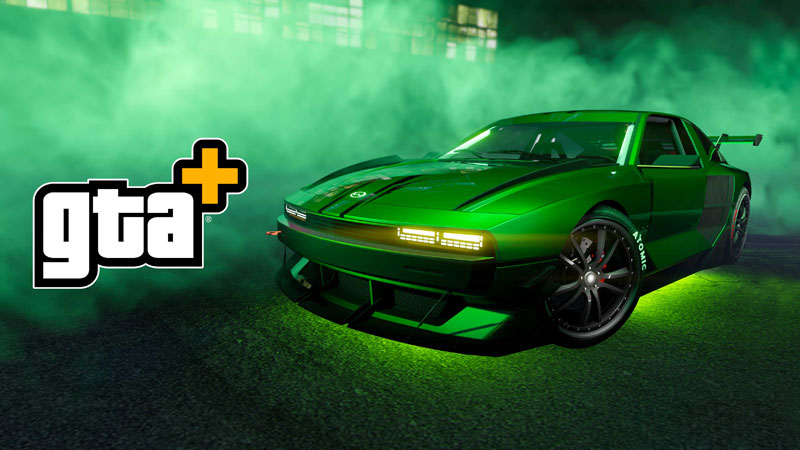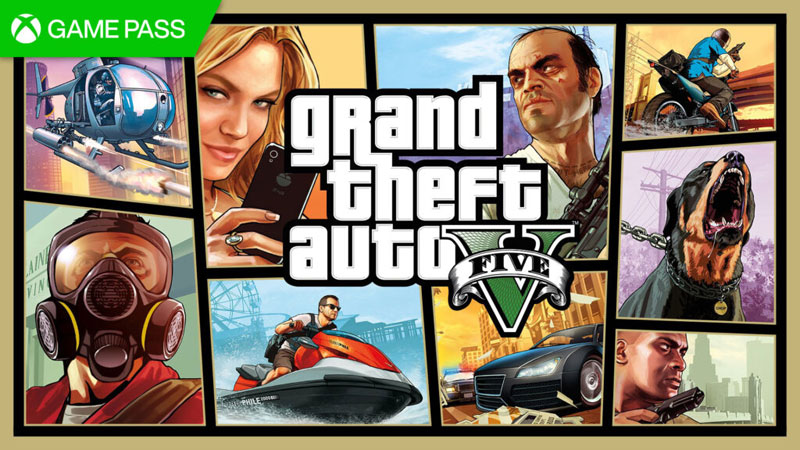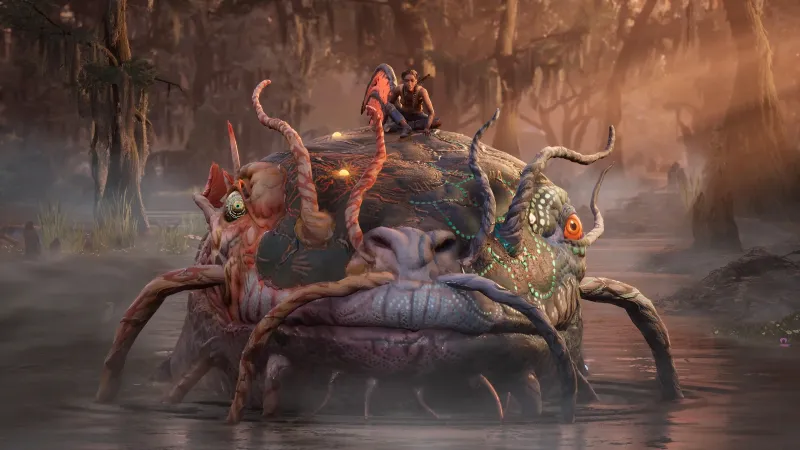Working Backwards to Make the Cartoon
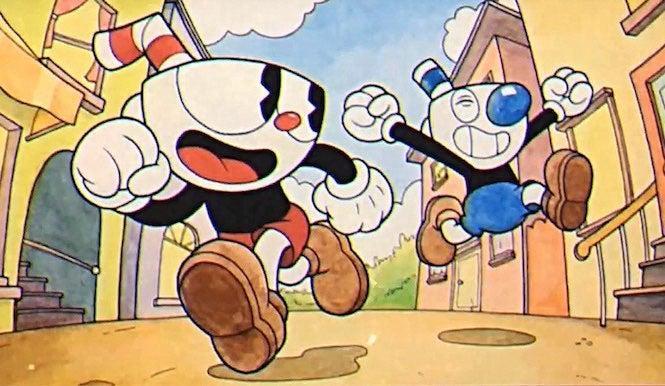
CB: So I think the most interesting thing about The Cuphead Show! now coming about is that it’s obviously based on Cuphead, which in turn is based on old 1930s cartoons. So in that sense, things have kind of worked backward to get to where we are now. What’s this process been like for both of you?
Chad Moldenhauer: Yeah, it’s crazy how it’s all coming around now. And again, it’s something that we all love and enjoy, but we can’t quite grasp the idea that we make this small indie game that blows up and now it’s getting a Netflix series, so that’s been brilliant. But I think that the entire time we were creating the game, lots of the design choices were made with the thought of, “Would this work well as a character in a cartoon short in the 1930s?” But only asking ourselves that so it felt really of that time and matched the look we were going for. But, I think Jared might’ve joked throughout when we were getting closer to completion that, imagine if one day, if this turns it to cartoon. It’s funny to make silly dreams and now it’s just, I don’t even know what to say.
Jared Moldenhauer: Yeah, it’s definitely that. You don’t expect it, but you’re like, “Wouldn’t that be hilarious?” I mean, we’re making a game a cartoon, but what if a cartoon itself picked up based on the game, so we have this full circle feeding itself, and it’s one of those things where you just don’t see it coming. It’s just the luck of the draw and having such a wonderful fan base to support you. So you have more eyes on the IP and it seems like a logical step, but at the same time, it’s still shocking that it happened this way, especially being from an indie game.
Roles in Making The Cuphead Show!
CB: How involved were you with the creation of The Cuphead Show!? You both have producer credits on the series, but what was the actual day-to-day process of creating this like on your end?
JM: We would join weekly meetings. I think our role as a producer was to just guide and ensure that this stays within the vision of the game. So since we have a larger grasp on what these characters are and how the fan base views them, then we can be that helpful insight to help the creative team bring these characters to life. So it was like, not a large list of dos and don’ts. It was just like, here’s a few don’ts. And then when you’re approaching something new, we can express like this is the way that character is, or here’s maybe a couple of ways to approach them. And then we would let them kind of be free to explore it and expand upon it.
CM: And I think it was just a great sounding board for them. We really know the game inside and out, even the most subtle things. So instead of having somebody on their team try to search for, or play a specific part, it was way better for us to give that feedback on top of helping guide the whole blending of the two mediums, which it worked out so well.
Experimenting With New Ideas
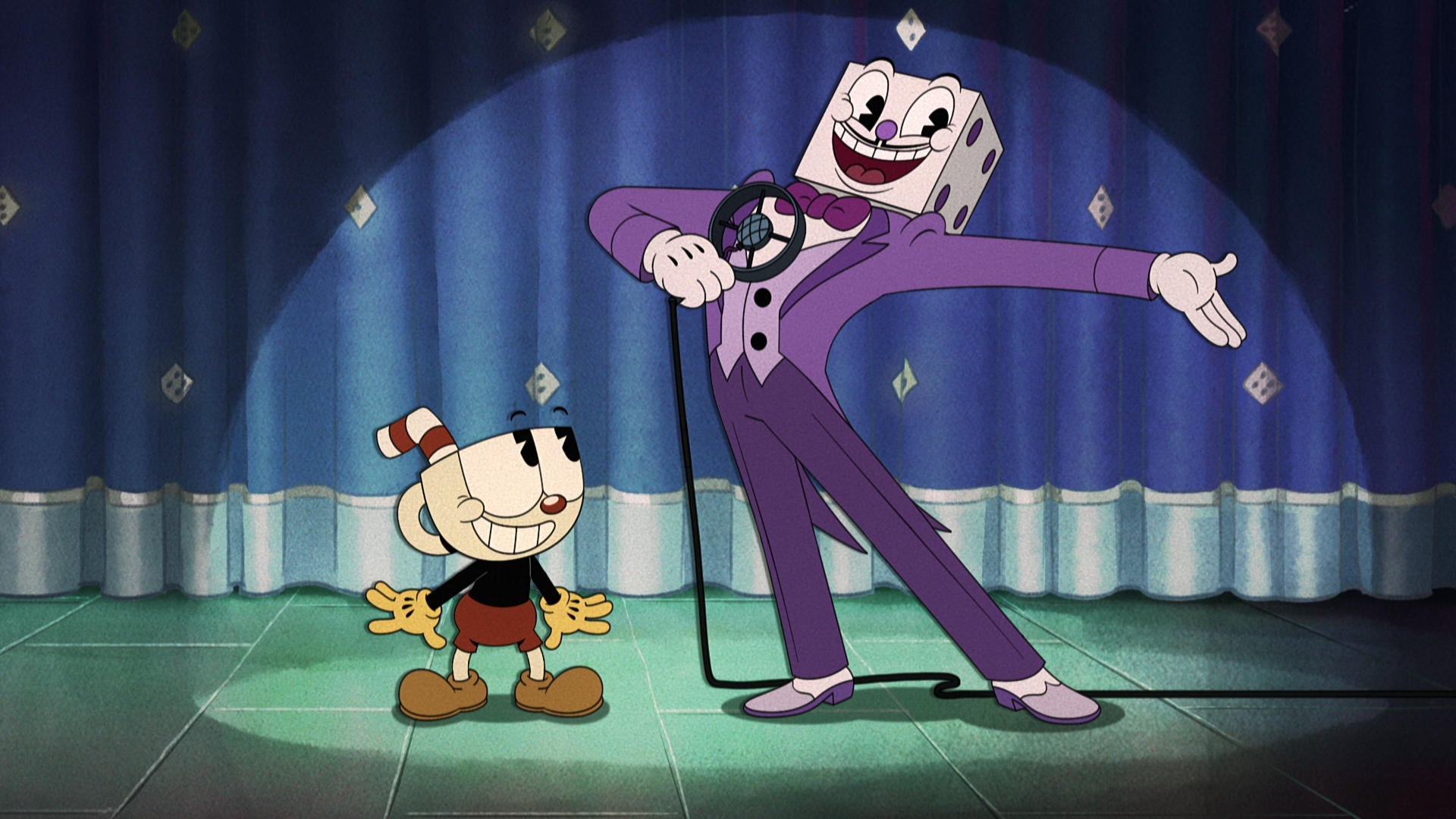
CB: Compared to a lot of video game adaptations that are coming about in the TV and film space nowadays, Cuphead has considerably less lore and backstory to pull from. So in that sense, how open were you both to giving the cartoon creators flexibility to bring new ideas into this world?
CM: I think that the thing that made it really easy is that we pay homage to the 1930s and so does the show. And in that way, the 1930s didn’t have these perfect throughlines of what a character must or must not do as they went on their journey. So any character could actually take on different roles. Mickey Mouse could be just a cowboy or maybe the next one he is selling hot dogs. And it’s that mentality that really helps drive what these characters can do, because they don’t have to be linked to the game in the way that, “Hey, what does this character do? Oh, please only make it that he had a deal with the Devil and he has a soul contract with him.” This can be totally, again, just so creative and open to just grasp at anything, and that really helps the show shine on many levels, too.
JM: The difference too, is just like structurally between the two mediums. The game itself has to use the bosses, like all those characters, in a more functional way. It has to be a gameplay-oriented sense, so it’s as much story or character to them. You still feel who they are and get the charm, but with this process, then you can expand upon more of these other journeys or who they also could be and what they might do on Inkwell Isles. So it’s not so structurally, like the pirate has to only be a pirate, exactly as Chad was saying. It’s like, he could be a pirate, but then he could also run the fish shack down by the shores.
So, we were very open-minded to what this team would present and we weren’t trying to hold back anything. It was just like the simple guideline per character of maybe personality traits and then let them explore. Because even in that sense, like even in a Mario world, it’s not like the characters have to be locked to one story or a series of events that have to be chronological. It’s almost as though the characters could go through a series of different plays or vignettes and do or achieve anything that you wanted them to. So, that combined with the ’30s, anything goes, allowed us to come up with some pretty crazy scenarios for the TV show.
Finding the Voices
CB: The Cuphead Show! finally gives voices to many of these characters that you’ve been working with for quite some time now. How much input did you have when it comes to what they ended up sounding like?
CM: I think it was fully collaborative, for the most part. We had ideas for a bunch of the key characters for how we thought it would sound. We might write a little, two-paragraph description of what this character might sound like, and then it was just back and forth. And the Netflix team had great input on where they wanted to take the Devil, which was actually a little bit different from what we initially thought. And we just kind of went through that iterative approach and landed on the end result.
JM: Yeah, some of it is also tied to just, not the simplicity, but the notion that we wanted to keep it within the ’30s. So, if you either go back to old cartoons, they have a real nasally vibe. But if you watch the movies of the era, there’s that fast-talking, newsie-sounding, like, “Hey guys. What do you want to do? What’s around the corner?” So we knew the tone and the pitch, but they were very good at interpreting. And again, going with the back, forth, we found a unique voice, but also a unique voice that sounds different than your traditional cartoons. It’s not just like the visuals and the music of the era, it also kind of has that the voice acting and a little twist to it that makes it stand out. So, we’re just really excited that the team got it and that they did produce and choose amazing actors for each role.
Unexpected Ideas
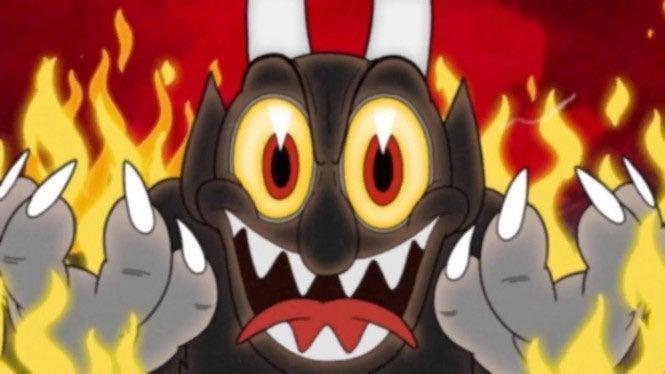
CB: Was there anything new that the creators of The Cuphead Show! brought to Cuphead that you guys particularly found yourself loving? Maybe even something that you could see yourself adding to a future game in the series?
JM: I think there’s a lot of stuff that we wouldn’t have been expecting. The Devil himself, they found a way to grow the character into almost having their own family. So it’s like a Cuphead, and Mugman, and Chalice, and Kettle have their own little gathering. But the Devil in the underground has like a whole series of workers. And it wasn’t so much that we were like, “Pitch us and where is this going to possibly go?” It was just that they already had such great ideas of where they could possibly take the character. And some stuff we just, maybe weren’t thinking of but as soon as it’s done, they’re like, “Here’s a scene where the Devil’s singing and dancing.” And I’m a huge musical fan, plus ’30s cartoons are all about song and dance. So it was like, this makes sense. The Devil is a little bit more of a showman.
CM: I think a lot of the stuff was, aside from those big key moments, there was a lot of little things that we weren’t expecting, that didn’t necessarily need a sign-off, but we were like, wow, that’s really great that they added some Easter eggs of the game to this scene. Things that the fans can pick out in the background, or even during an animation, how it relates back to the game. Just a whole bunch of really cool stuff that was less like, we weren’t taken aback by it, but just like, oh, this is really like shaping up. We thought it was going to be amazing, but now it’s becoming bigger and even better than we could ever dream.
Expectations for The Delicious Last Course
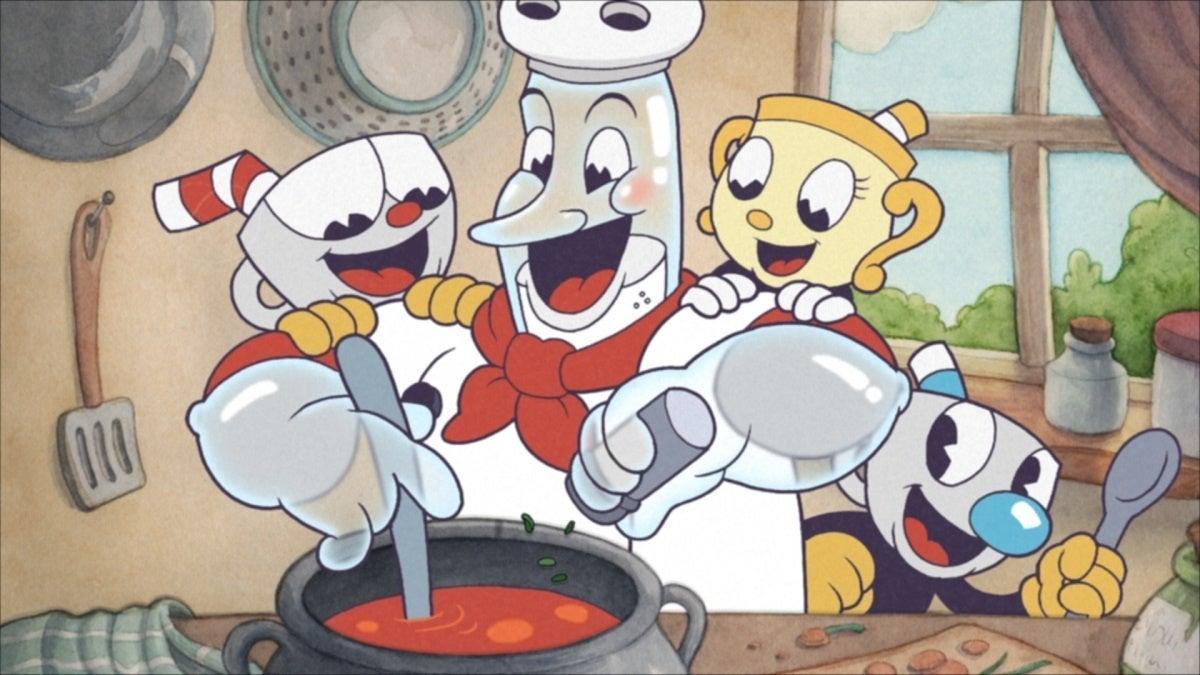
CB: I wanted to ask you a couple of questions about the upcoming DLC for Cuphead, The Delicious Last Course. This is something that you announced back in 2018 and it’s finally set to release this summer. Given the long span between announcement and release, I think a lot of fans have been wondering just how big this add-on is going to be. Can you give me a better idea of what to expect?
JM: It’s going to be about the content of what you would expect a DLC edition to be. So it’s not a brand new game, obviously, because we’re sticking to the DLC moniker. But it’s definitely like chock-full of goods for fans. We’ll be excited to see what new battles, challenges, new ideas, how much more we pushed the musicality and the visuals to different levels. So there’s going to be a lot to take in, for sure.
CM: Yeah and even pushing it to levels that maybe only our internal team noticed, but it definitely was like, in a way, we perceived this as our last real love letter to the 1930s as a video game, at least for the very foreseeable future. And we just kind of wanted to go all-in, really dig into some of the later ’30s craziness that some of the studios pulled off back then and dive into a bunch of fun challenges.
CB: Did the success of Cuphead allow you to potentially go in bigger, more ambitious directions with The Delicious Last Course?
CM: I would say probably, yes. The first game was successful enough that we didn’t have to go, “Oh my gosh. If this DLC doesn’t get shipped in two months, then we’re going to have troubles.” So there was a little bit of that and I mean, it’s just a lot of announcing a bit too early, and I say a “bit” in a general sense.
JM: Well and nobody could’ve also saw the pandemic coming. And you can write down what you want on a paper and be like, “We’ll be able to pull this off.” And then when you’re stuck in pandemic life, it’s just not quite the same.
Planning the Musical Performance at The Game Awards
CB: So at the end of 2021, you opted to show off The Delicious Last Course again at The Game Awards and finally announce the DLC’s release date. In addition, though, you also had a musical performance that I thought ended up being one of the best parts of the show. How did that all come together on your end?
CM: That was actually just us talking through ideas with Geoff. Maya on our team proposed the idea like, “Why don’t we do something like this musical number?” And it just started as like, “Okay, that could be a kind of a cool idea.” And as we were developing the trailer and there was some back and forth about how the logistics of how this could work and what it would look like. It’s just something super fun to think of and come up with, and less of like, “Hey, what’s the exact perfect marketing plan?” And more of like, “What do we think is really cool?” And let’s just do that.
JM: That was essentially it. We’re like also this is a celebration so how can you bring more joy? And Kris Maddigan just writes such fantastic music. So we had a perfect jingle to start the energy and the celebration of the DLC and then you get a special, one-off trailer. So it was definitely a collaborative work between both sides and we’re glad people liked it. I’m glad you enjoyed it.
